How to make shelves in a pantry with your own hands?
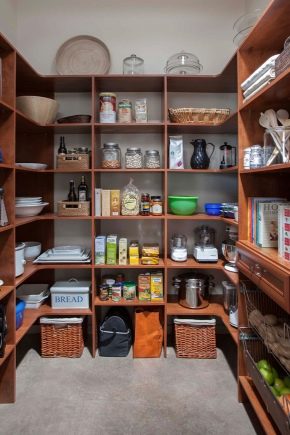
A pantry room is the dream of many people, and if the owners of private houses can afford the luxury of a separate room for storing and organizing various things, then those living in apartments have to be content with only a small room at best. This happens if, during the planning of the apartment, a separate, very small place is equipped, completely equipped with wooden shelves. Sometimes there is no such room at all, but during the renovation it can be done on your own, thus fulfilling your cherished dream.
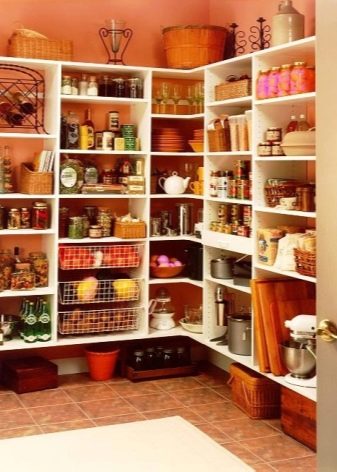
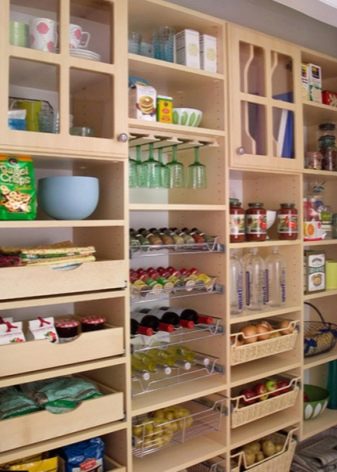
It happens that a storage room is provided, but at the same time it is not equipped inside. In such cases, there are two options: the first involves calling a master and making shelves to order, and the second - arranging the room with your own hands. In this article, we will take a closer look at the algorithm of actions when creating a pantry rack on your own.
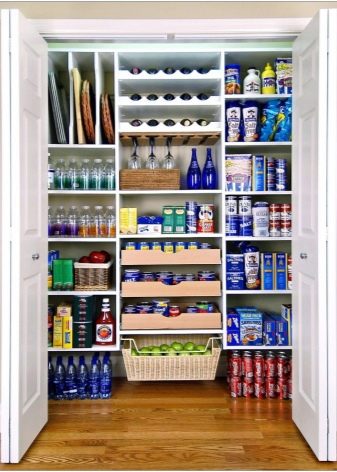
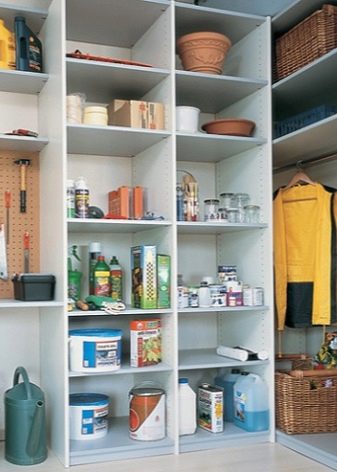
Design
There are few options for creating a shelving in the closet, there are only two of them: make a separate cabinet or attach the shelves directly to the wall. After choosing one of the above two options, first of all, you should take measurements of the room and reproduce the detailed design of the future pantry on paper. It is necessary to take into account some of the nuances in order to use the shelves conveniently. For example, it is important to arrange the shelves in such a way that it is convenient for you to be inside when picking up the item you need.
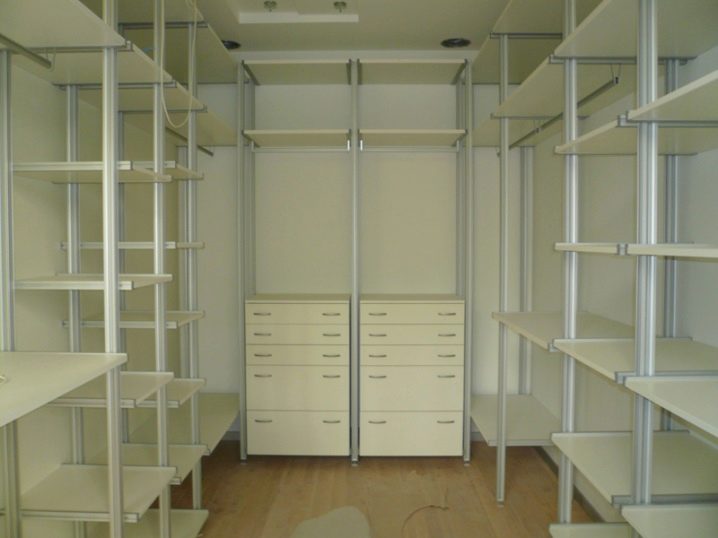
Be sure to consider the correct placement of the shelves: from wide to narrow. Naturally, the wide ones should be at the bottom in order to store the heaviest and largest objects there, which are difficult to put up and take off from there. You also need to think about the distance between the shelves themselves. Pre-review the things you put in there and determine the places to place everything at the correct distance.
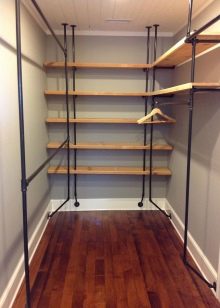
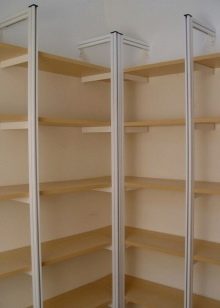
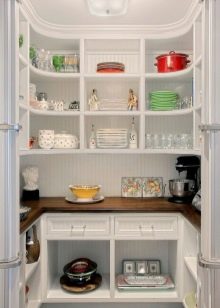
Further, the location of the shelves should be determined, as a rule, either a U-shaped or L-shaped structure is built. These options are the most practical and convenient. For fastening, metal brackets will be optimal, they are the most durable and can withstand the maximum load.
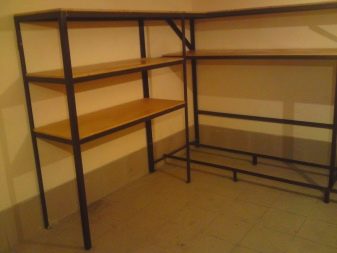
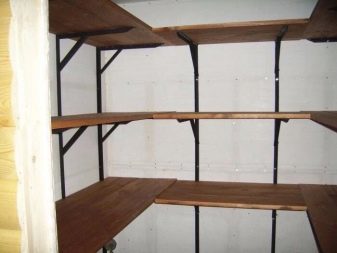
Materials (edit)
After all the above steps have been completed, you need to start choosing materials. There is one economical option, thanks to which you can save a lot of money. If you have an old chest of drawers, bedside tables or a small rack at home, then you can disassemble them and make good and free shelves out of parts.
The second option involves the purchase of boards made of wood or other material., having previously determined their width, thickness and quantity. Indeed, depending on the severity of the stored items, the shelves should be wider or narrower.
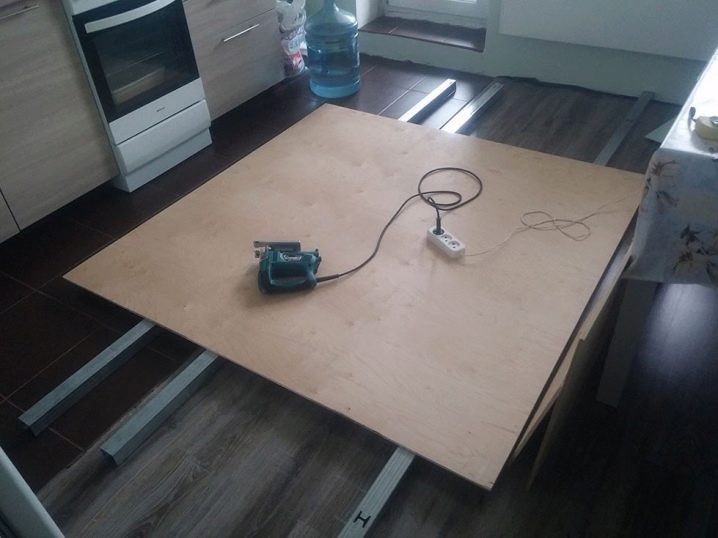
Some people use ready-made sheets of plywood, but this option is applicable only if you are not going to put heavy objects on this shelf. At best, with a strong load, it can crack and gradually sag, at worst, it will break sharply and drag down everything that it holds. Therefore, it is still recommended to use denser materials for the pantry in order to be sure of their strength and quality.
In principle, the material can be not only wooden, it is possible to use metal structures if they are strong enough to withstand the expected load.You should also think about the mounts that will hold the boards and other consumables.
Instruments
Let's consider the tools necessary for work. In principle, if you have ready-made and suitable boards in stock, you will not need too many of them. If the material is not ready and needs to be adjusted in size and shape, then you will need a jigsaw and a plane to perform the necessary actions. In this case, it is necessary to have sandpaper for processing the edges of the saw cut and the entire shelf as a whole, in order to give it a complete look.
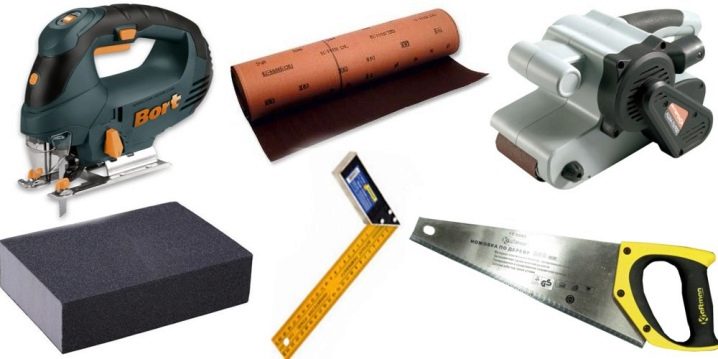
When the shelves are ready, only a punch is needed from the tools.to make holes in the walls and fix the brackets, as well as a screwdriver if it is necessary to combine parts with each other. It is imperative to use a tape measure during operation for accuracy of measurements, a building level, so that the shelves are even and a simple pencil or chalk for wall marks.
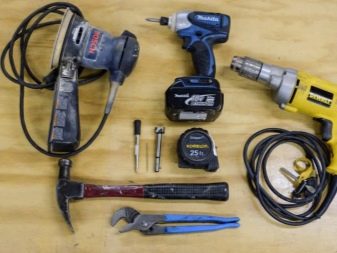
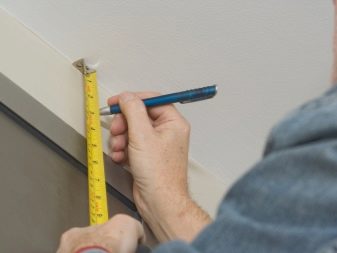
Seat selection
The first step in starting work is choosing a place for the shelves. You can't just attach them to the wall at will, it is very important to take into account certain factors so that upon completion of the work you are satisfied with the result, and your pantry will serve you for many years. The wall intended for fastening must necessarily be load-bearing, since ordinary partitions may not withstand a high load, and all the shelves will simply fly down.
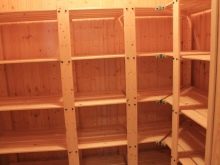

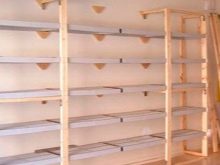
The attachment point must be prepared in advance: it should be sanded, leveled and, if necessary and desired, plaster. This is necessary so that the shelves stand up straight and there are no problems with their installation.
And of course, it is important to think about the right lighting for your storage room for your convenience. This must be done before installing the racks.
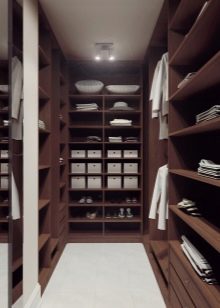
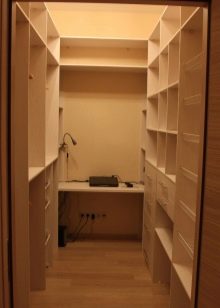
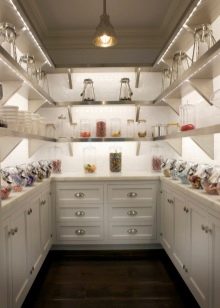
Installation process
After carrying out all the measurements, preparing the necessary materials and tools, as well as completing all of the above steps for choosing a place and preparing it, you can get down to work.
First steps to making your little pantry dream come true:
- First of all, markings should be applied to the walls using a tape measure and a building level. This will help you to ease the task of fastening and ensure that the shelves are even.
- Next, you need to make holes in the wall using a puncher, and then fix the bases for the brackets in these places with the dowel-nails. The distance between them depends on the height of the future shelves.
- After completing these steps, the frame of the future pantry itself is assembled and the brackets are installed.
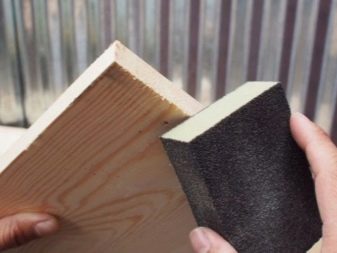
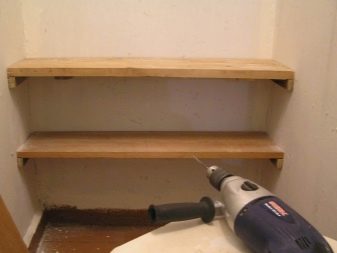
- The next stage applies only to those who do not have ready-made boards and need to cut them out on their own. Having previously checked the correctness of the dimensions (just in case), you need to cut out the shelves you need in shape with a saw or jigsaw, and then thoroughly process their edges with sandpaper to give the surface an attractive appearance.
- When the main work is done, all that remains is to put the shelves in their places and fix them with a screwdriver and fasteners.
- The last step will be cleaning and cleaning the room from excess sawdust, unnecessary parts and other things that you needed in your work.
Your pantry room is ready for organizing and storing unnecessary items in everyday life. You can bring things there and enjoy the vacated space in the apartment.
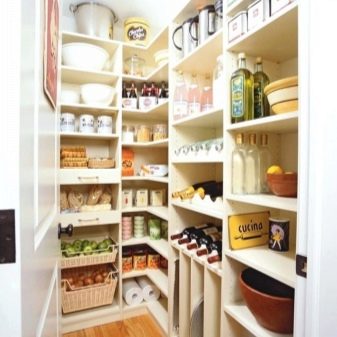
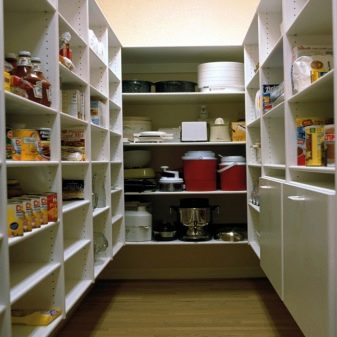
How to make a rack in the pantry, you can see in the next video.












The comment was sent successfully.